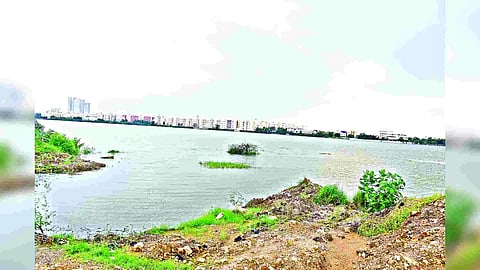

CHENNAI: Pallikaranai Marshland, which is the natural sponge of the city and one of the most sensitive ecological sites, is being buried under the rubble and garbage. Despite increasing awareness, the marshland has been constantly the threat of rampant encroachments-- legally and illegally. The marshland would absorb excess rainwater during monsoon and prevent flooding.
After reporting on degradation of the Ramsar site as well as the government’s measures to restore the land for the past one year, DT Next expects more stringent measures and transparency when it comes to permitting buildings in and around the marshland.
Buildings that encroach upon the marshland should be identified and removed during the year. Most of the promoters, who have apartment buildings in the area, have dumped construction waste to create roads to connect their properties, the government should remove such roads and collect environmental compensation from them.
As per records, the Pallikaranai marshland has shrunk from 5,500 hectares in 1956 to 550 hectares as of 2023. Apart from buildings, the marshland has been eaten up by Perungudi dumpyard measuring about 191 acres where about 2,000 tonnes of waste is dumped daily.
Even though the Greater Chennai Corporation has undertaken a bio-mining process at the dumping yard to reclaim the Marshland, the completion is getting delayed for months. Removal of the dumping yard is not only important to preserve the biological diversity of the marshland but also to ensure safer living conditions to the residents around it.
While remediation is one way to restore the marshland, legal and criminal actions against the persons, who connived in registering of marshland, builders, city planners and others, should be taken.
Restoration of Pallikaranai Marshland should become an example of restoration of water bodies as government agencies like Tamil Nadu Urban Habitat Development Board (TNHUDB) construct tenements on them. A CAG report pointed out that the TNHUDB constructed tenements on land classified as ‘water body’ despite availability of sufficient land nearby.